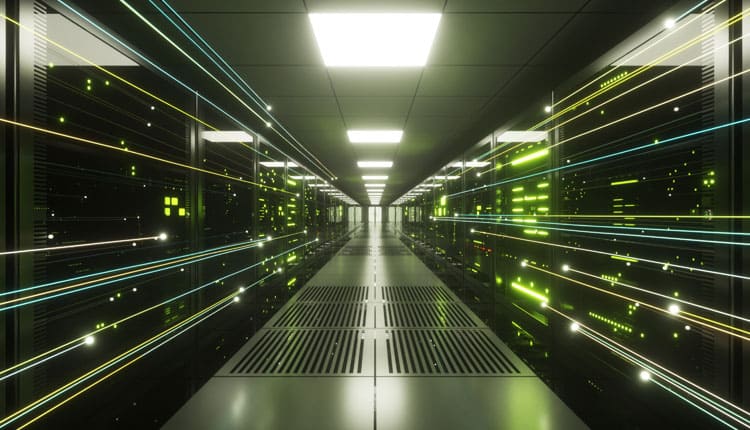AI is helping us monitor sustainability metrics and improve cooling system efficiencies: Sudipta Sanyal, Aurionpro Solutions

As the digital landscape continues to evolve at a breakneck pace, data center efficiency and sustainability have become paramount. Sudipta shares Aurionpro Solutions’ holistic approach to data center strategy, which spans from project inception to ongoing operations.
Some edited excerpts from an interview:
Please describe in brief your data center strategy. Could you share some specific examples of innovative strategies you have employed to optimize data center efficiency, reduce energy consumption, and enhance overall sustainability?
Our strategy for data center implementation starts at the project’s inception stage and covers the complete lifecycle up to operations. We assist clients in selecting a site based on factors such as business sustainability, and design physical infrastructures to optimize PUE (power usage effectiveness) to reduce carbon footprint, and incorporate other sustainable features. Through this, we are able to aid clients in achieving operational sustainability.
Some of the innovative strategies for increased efficiency include the implementation of modular and scalable designs—following the ‘build as you grow’ concept. This approach enhances business sustainability and operational efficiency by improving utilization. Additionally, we recommend the implementation of liquid cooling for high-performance computation and design water-neutral cooling systems, among other techniques to enhance energy efficiency.
Do you use AI in enhancing the operational efficiency of your data center? What are some of the major benefits? Please quantify wherever possible?
We implement AI as a part of our data center infrastructure management tool. This helps us monitor energy and sustainability metrics, and improve cooling system efficiency. AI also aids operations with predictive maintenance, optimizing costs and extending the lifespan of physical infrastructure by reducing disruptive outages. There is a notion that AI will immediately reduce data center staffing. However, this isn’t a reality yet. We have to be prepared that it might become true in the future if a shortage of qualified manpower persists.
What security measures have you implemented in your data center to protect against evolving cyber threats, and how do you ensure data integrity and confidentiality?
We implement a multi-layered approach to tackle evolving cyber threats. We begin with robust perimeter security, including firewalls, intrusion detection and prevention systems, as well as regular vulnerability assessments. Network segmentation further helps isolate critical systems from potential breaches.
For data integrity, we employ cryptographic controls such as hashing and digital signatures to ensure that data remains unaltered during transmission and storage. Additionally, we implement access controls through role-based access, the least privilege principle, and strong authentication mechanisms to restrict unauthorized access to sensitive data.
Data confidentiality is maintained through encryption mechanisms, both in transit and at rest. We utilize strong encryption algorithms to safeguard data from unauthorized viewing or manipulation. Regular security audits and penetration testing are conducted to identify vulnerabilities and address them promptly.
Further, we have implemented an incident response plan designed to swiftly detect, respond to, and recover from any security incidents. Through continuous monitoring and log analysis, we’re able to identify suspicious activities and potential threats, enabling us to take proactive measures.
We deploy antivirus software for malware detection, NextGen Firewalls for network protection, and monitoring tools like Zabbix. Security information and event management (SIEM) solution enhances threat detection, while our dedicated SOC team responds to incidents in real-time. The Zero Trust Framework, access controls, patch management, logging, and backup and disaster recovery measures are all implemented and are integral parts of our regular InfoSec Awareness training for cultivating a security-conscious culture. Compliance with ISO standards and frameworks ensures comprehensive protection against cyber threats, underscoring the synergy between technology, processes, and expertise.
How do you leverage emerging technologies and trends, such as edge computing and distributed data centers, to meet the evolving demands of modern data center operations?
To address the evolving demands of modern data center operations, leveraging emerging technologies like edge computing and distributed data centers is crucial. With the advent of technologies like 5G, the need for proximity to consumers drives the adoption of modular containerized and micro data centers. By offering containerized data center solutions, we cater to these demands, ensuring secure and efficient physical environments for housing IT hardware. This approach optimizes latency, enhances data processing capabilities, and supports seamless real-time applications, effectively meeting the evolving requirements of data management in an increasingly interconnected world.
How do you assess and adopt new technologies and trends in the data center industry, such as containerization, modular designs, or liquid cooling systems, to drive innovation and stay ahead of the curve?
Currently, our customer offerings include a modular scalable data center solution for enterprises, colocation, and hyperscale clients, as well as a containerized data center solution for implementation at the edge. The implementation of distributed data center infrastructure in 5G will facilitate the incorporation of more energy-efficient and sustainable features, such as renewable energy sources and various cooling technologies. At present, liquid cooling is more prevalent in high-performance computing, mainly in research organizations. However, as racks become more power-intensive, rendering air-cooled hardware less feasible, liquid cooling will be adopted even for enterprise, colocation, and hyperscale facilities.

